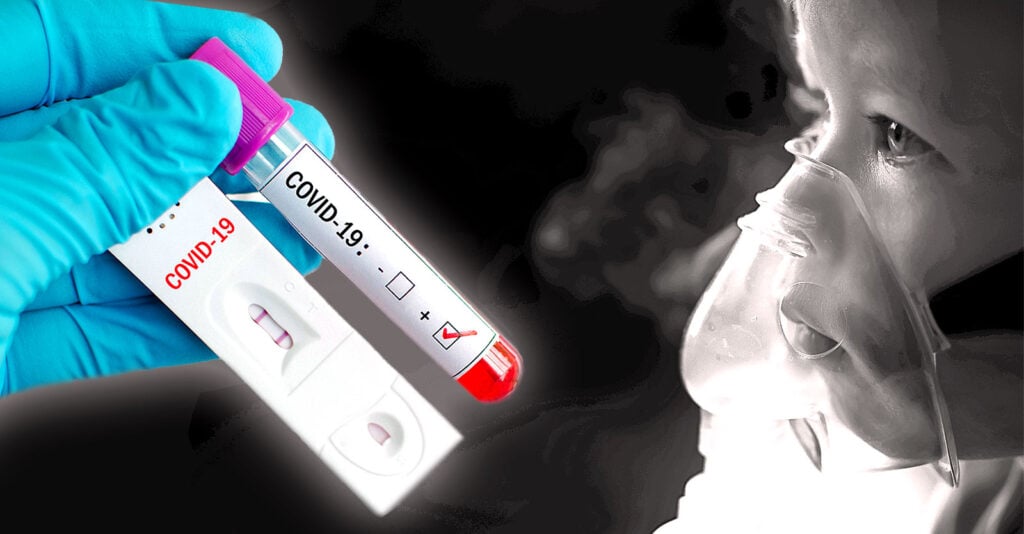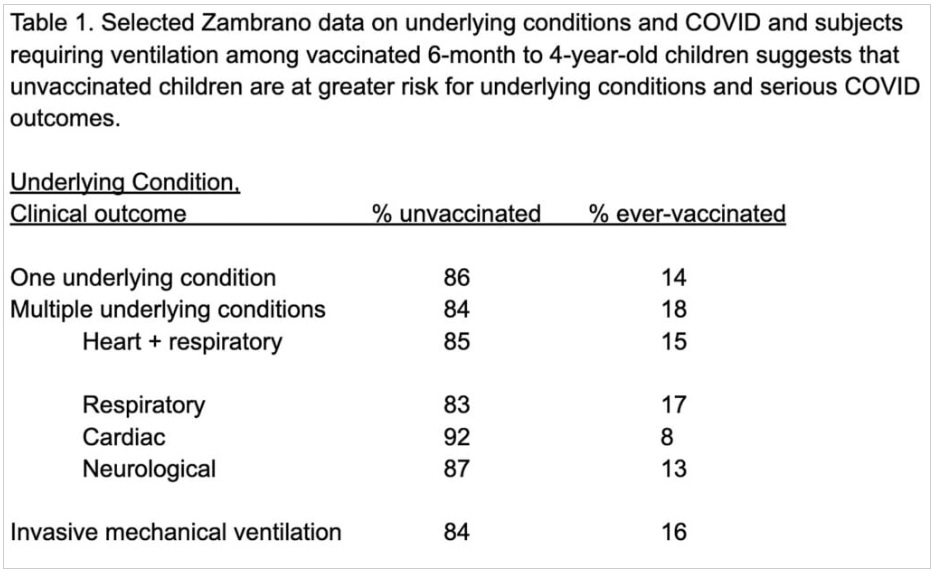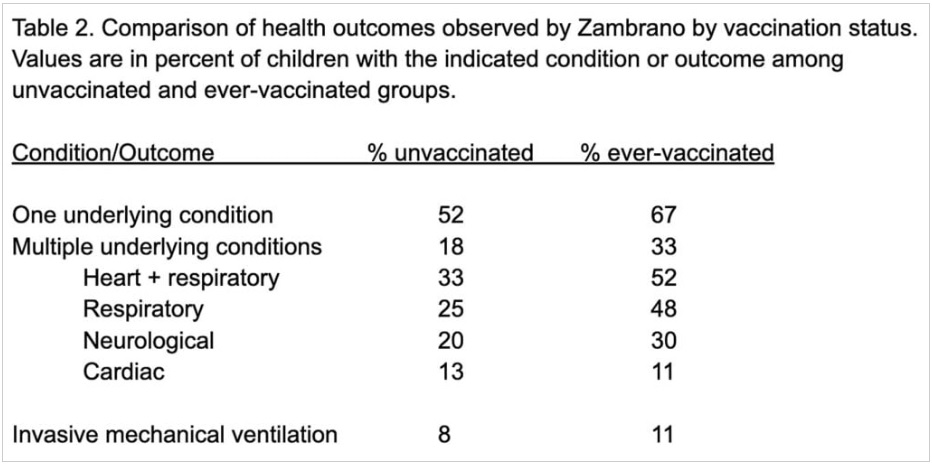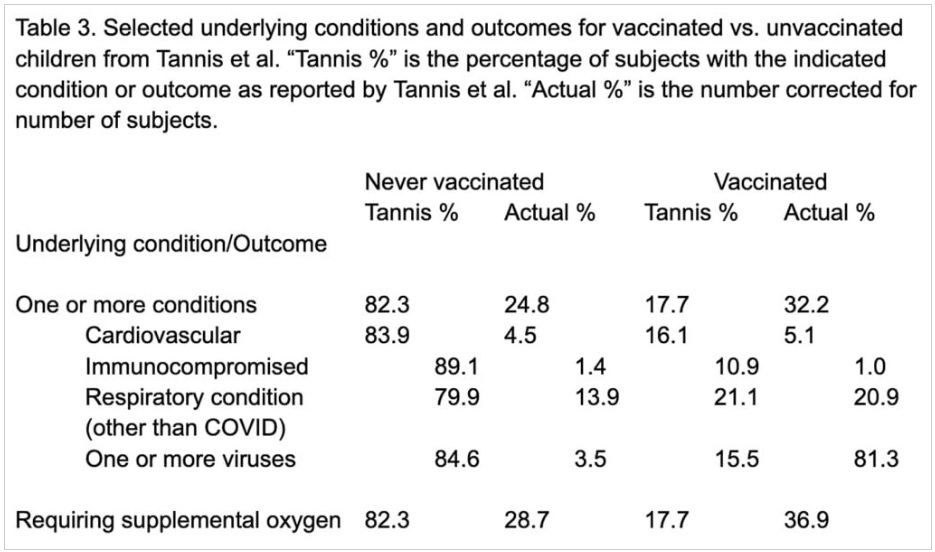CDC Study Concludes Most Young Children Hospitalized for Covid Were Unvaccinated — After Enrolling 7 Times as Many Unvaxed Kids in Study
The authors of the study published last month in The Pediatric Infectious Disease Journal used their results to recommend covid mRNA vaccines for children as young as 6 months and to conclude that unvaccinated kids were unhealthier to begin with.

A U.S. government-sponsored study published in late December 2023 in The Pediatric Infectious Disease Journal reported that most young children hospitalized for acute covid had not received an mRNA covid vaccination and were sicker to begin with than vaccinated children.
The authors’ conclusions are true on the surface, but their analysis ignored that more than 7 times as many unvaccinated as vaccinated children were enrolled in their study.
Only 4.5% of trial subjects completed primary covid series
Investigators led by Laura Zambrano, Ph.D., a Centers for Disease Control and Prevention epidemiologist, recruited 597 children ages 8 months through under age 5 hospitalized for covid at 28 U.S. pediatric hospitals between Sept. 20, 2022, and May 31, 2023.
Unvaccinated subjects outnumbered subjects who had received at least one covid shot by 528 to 69, a more than 7-fold difference.
Children were grouped by demographic factors such as race, sex and geographic location, vaccination status (no vaccine, incomplete vaccine series or fully vaccinated) and underlying non- covid illnesses, or comorbidities.
Only 4.5% of the subjects had completed their primary covid vaccination series and 7% had received at least one dose.
Cases varied widely in severity, with 174 (29.1% of all subjects) admitted to intensive care and 75 progressing to life-threatening illness.
Fifty-one (8.5% of all subjects) required life support via invasive mechanical ventilation, and three required extracorporeal membrane oxygenation, a life-support treatment involving a heart-lung machine.
Based on results from both vaccinated and unvaccinated groups, infants 8 months to under age 2 were more vulnerable to serious outcomes than children ages 2 to 4 years.
For example, the youngest subjects had more life-threatening illnesses and the greatest need for high-level respiratory support involving vasoactive infusions — intravenous treatments to maintain normal blood pressure and heart rate. Yet they also had shorter hospital stays.
Investigators concluded that most children hospitalized for covid, including most children with underlying medical conditions, were unvaccinated. On that basis, they called for “strategies to reduce barriers to vaccine access among young children.”
Researchers tested kids for covid but not other respiratory infections
Zambrano et al. also compared the Pfizer mRNA shot to the Moderna product. They found that children who took the Moderna product were somewhat more likely to experience a serious outcome, however, the numbers from both groups were small and the authors did not subject them to statistical analysis.
Based on their analysis they also calculated and reported, in their “Results” section, that mRNA covid vaccines were 40% effective in reducing serious outcomes. However, in their discussion (several sections later), they admitted that “vaccine coverage in this population was too low to evaluate vaccine effectiveness.”
There were two notable limitations to the Zambrano study. Even though the researchers recruited children who were only partially vaccinated the study’s design excluded children who had received any vaccination fewer than 14 days before hospital admission. Therefore no short-term post-vaccination adverse events were included.
Another limitation was that children were tested for covid but not for all possible respiratory infections, meaning “it is possible that RSV [respiratory syncytial virus], human metapneumovirus or other respiratory viral co-detections influenced disease severity.”
Media parroted authors’ conclusions
U.S. media picked up on the Zambrano paper and repeated its conclusion that most hospitalized covid pediatric patients were unvaccinated — ignoring that the study included more than 7 times as many unvaccinated as vaccinated subjects.
A deeper dive into the data reveals the extent of this error and the discrepancies between what Zambrano et al. reported and what they saw.
Tables 1 and 2 illustrate what the authors got wrong.

These calculations say nothing about the relative outcomes for vaccinated and unvaccinated children because Zambrano et al. either did not perform the relevant calculation — number of cases in each group divided by the number of subjects — or chose not to report the results it generated.
Instead of presenting the number of subjects experiencing the indicated outcome as a percentage of vaccinated or unvaccinated groups, they reported them as a percentage of all subjects experiencing that outcome. Since there were 7 times as many unvaccinated as vaccinated subjects, this approach all but guaranteed the numbers among the unvaxed would be higher.
Here’s an analogy: In a hypothetical study comparing 10 coffee drinkers to 100 abstainers, five drinkers and 10 abstainers reported feeling nervous. Using Zambrano’s logic, 67% of people feeling nervous were abstainers, and just 33% drank coffee. This “proves,” according to Zambrano’s logic, that not drinking coffee doubles (67% vs. 33%) the risk of getting the jitters.
The correct way to view this data is that 10 in 100 abstainers, or 10%, felt jittery but 5 in 10 (50%) of coffee drinkers felt jittery, and that drinking coffee raises the risk of nervousness fivefold (50% vs. 10%).
Table 2 uses the same raw data as Table 1. But instead of reporting vaccinated and unvaccinated data as a percentage of all data, it first calculates the occurrence of these conditions or outcomes in each group and compares the inter-group differences.

Hospital stays were also on average one day shorter for the unvaccinated. The only area where unvaccinated children faired slightly worse was in underlying cardiac issues, but the authors did not address this small difference in their discussion.
Previous study used same tactic
A study preceding the Zambrano paper by three weeks used the same tactic to arrive at the same conclusion.
Tannis et al. compared many of the same outcomes as Zambrano in 6,337 unvaccinated and 281 vaccinated children ages 6 months to under 5 years.
All subjects had visited emergency departments for acute respiratory illness from July 2022 to September 2023.
By “coincidence”, Tannis also calculated vaccine effectiveness to be 40%.
Table 3 presents data from Tannis et al. with percentages reported by Tannis (Tannis %) and the actual values (Actual %).

Vaccinated children were also 68.3% more likely to harbor HCoV, an endemic coronavirus, than the unvaccinated. Similar to SARS-CoV-2 (the covid virus), HCoV can cause serious illness in immunocompromised people and the elderly.
yogaesoteric
January 20, 2024
